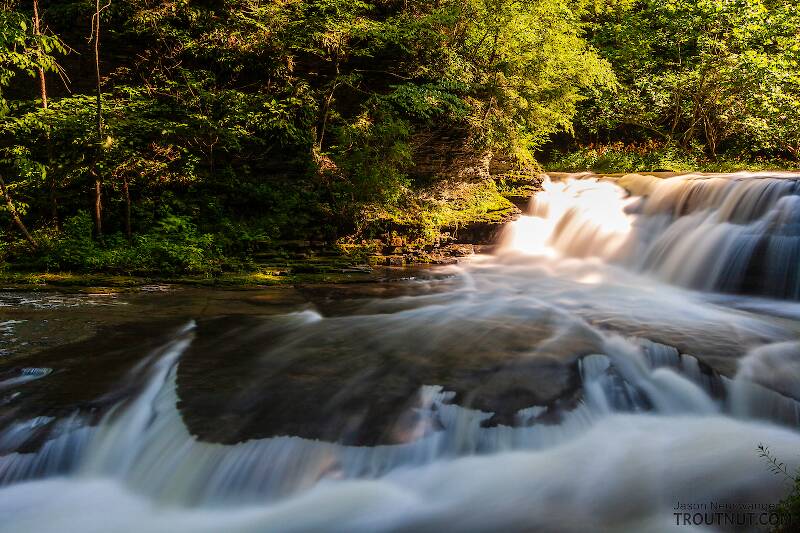
Hex Mayflies
Hexagenia limbata
The famous nocturnal Hex hatch of the Midwest (and a few other lucky locations) stirs to the surface mythically large brown trout that only touch streamers for the rest of the year.

- The prosternal horn is present.
- The mandible is clearly toothed, not formed into a uniform scraper blade.
- The seems to be only 2 major setae on the ventral edge of the hind femur.
- Chloride epithelia seem to be absent from the dorsal side of any abdominal segments.
Based on these characteristics and the ones more easily visible from the pictures, this seems to be Grammotaulius. The key's description of the case is spot-on: "Case cylindrical, made of longitudinally arranged sedge or similar leaves," as is the description of the markings on the head, "Dorsum of head light brownish yellow with numerous discrete, small, dark spots." The spot pattern on the head is a very good match to figure 19.312 of Merritt R.W., Cummins, K.W., and Berg, M.B. (2019). The species ID is based on Grammotaulius betteni being the only species of this genus known in Washington state.

Mayfly Species Paraleptophlebia guttata (Blue Quills)
Species Range
Physical description
Most physical descriptions on Troutnut are direct or slightly edited quotes from the original scientific sources describing or updating the species, although there may be errors in copying them to this website. Such descriptions aren't always definitive, because species often turn out to be more variable than the original describers observed. In some cases, only a single specimen was described! However, they are useful starting points.
Male Spinner
Wing length: 5.5-6.5 mm
This is a reddish brown species with small paired brown spots on the white middle segments of the abdomen. Top of head and thorax and end segments of abdomen shining blackish brown. Legs whitish with a touch of pale brown on the knees. Wings whitish including the stigmatic area and its cross veins. Costal cross veins obsolete except in the stigmatic area where they are about 12 in number; the middle ones longer, curving and sometimes forking.
Abdomen white on segments 2 to 7 with a row of little roundish brown spots in the spiracular area toward the hind angles of the segments and with a faint suggestion of clouds in the middle of the dorsum. Ganglia yellowish. Forceps white; the long basal segment not tapering so much as in other species but more parallel-sided or even a little widened in the middle. Penes broadly separated for half their length by a U-shaped notch, rounded on the distal ends with a large, recurved, external hook at the tip. The reflexed spur is long, white, and outcurved sinuously like a goat’s horn (see fig. 133). Tails white.
This species is very like P. mollis (now a synonym of Neoleptophlebia heteronea) in coloration, save for the spots on the white of the abdomen, and like Paraleptophlebia moerens in form of genitalia.
Start a Discussion of Paraleptophlebia guttata
References
- Arbona, Fred Jr. 1989. Mayflies, the Angler, and the Trout. Nick Lyons Books.
- Knopp, Malcolm and Robert Cormier. 1997. Mayflies: An Angler's Study of Trout Water Ephemeroptera . The Lyons Press.
- Merritt R.W., Cummins, K.W., and Berg, M.B. 2019. An Introduction to the Aquatic Insects of North America (Fifth Edition). Kendall/Hunt Publishing Company.
- Needham, James G., Jay R. Traver, and Yin-Chi Hsu. 1935. The Biology of Mayflies. Comstock Publishing Company, Inc.
Mayfly Species Paraleptophlebia guttata (Blue Quills)
Species Range
Common Name
Resources
- NatureServe
- Integrated Taxonomic Information System
- Global Biodiversity Information Facility
- Described by McDunnough (1924)

